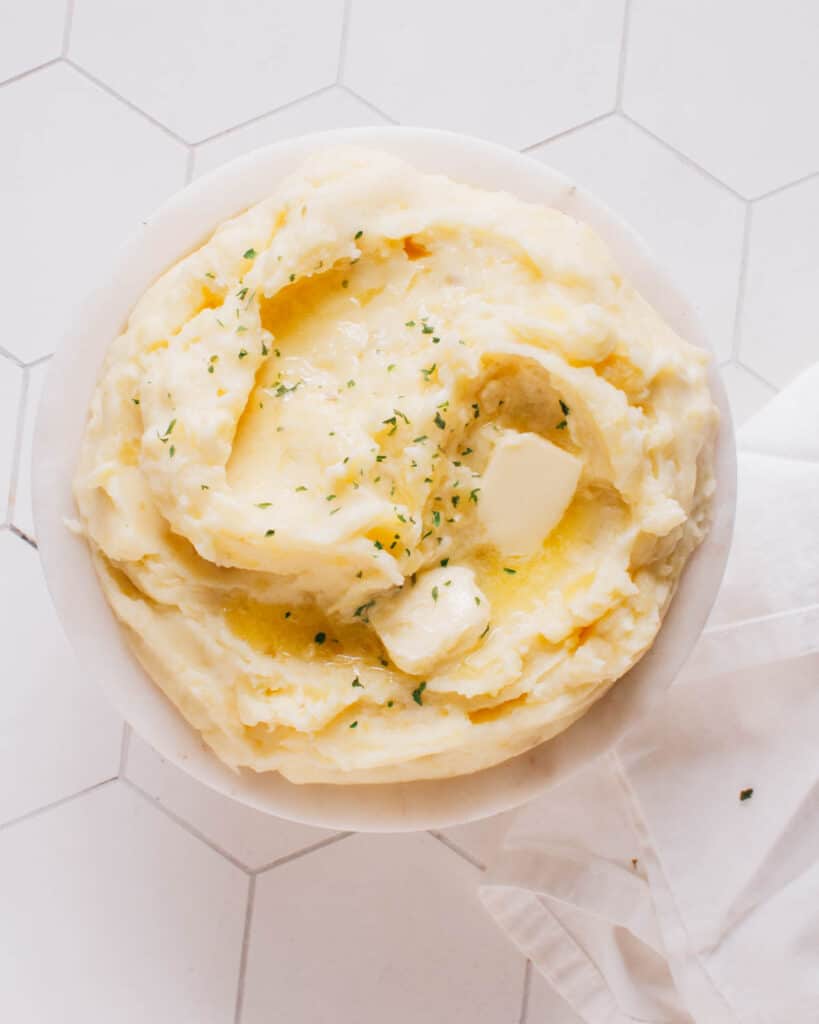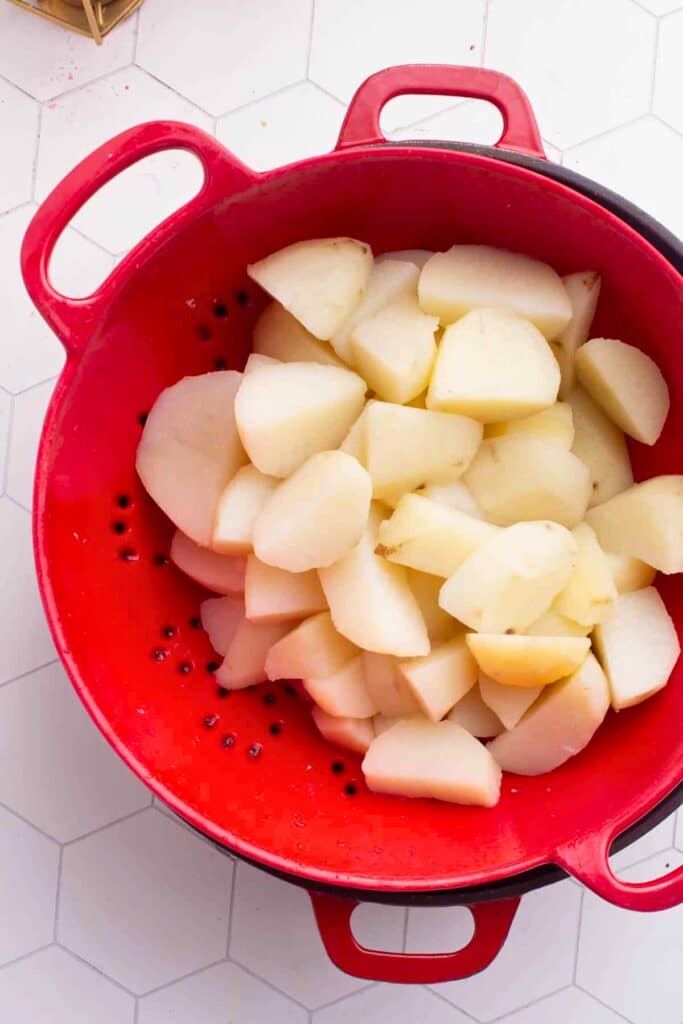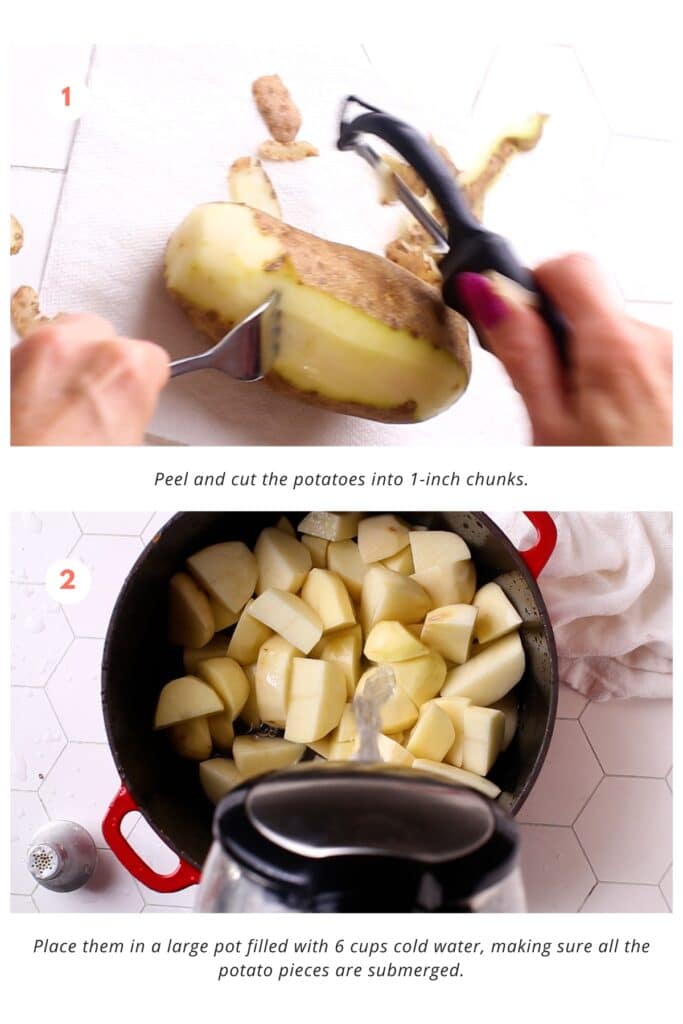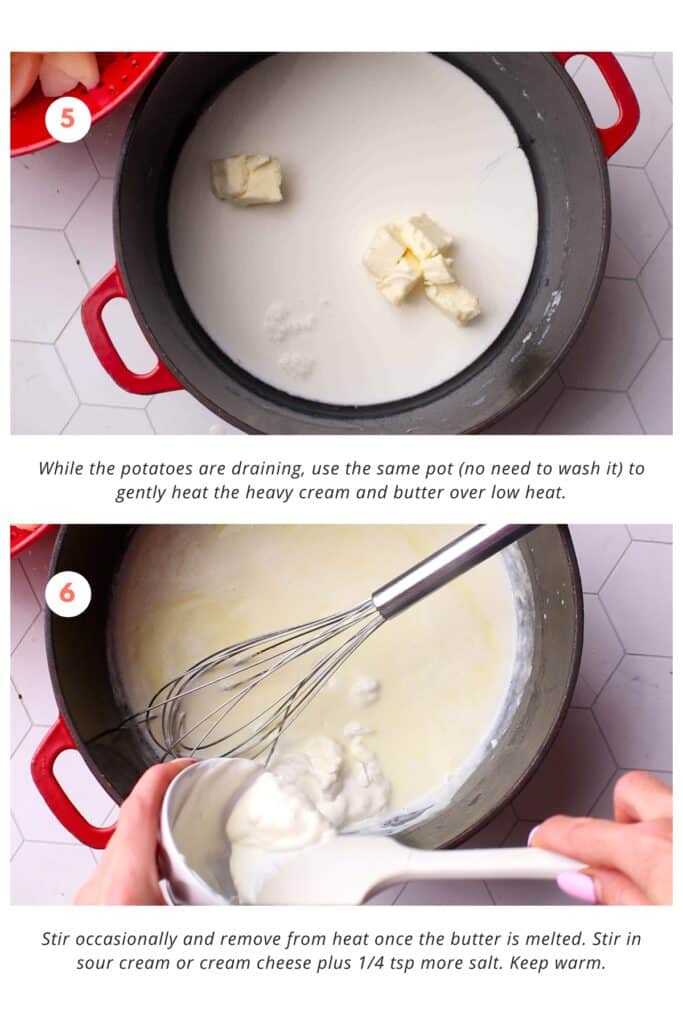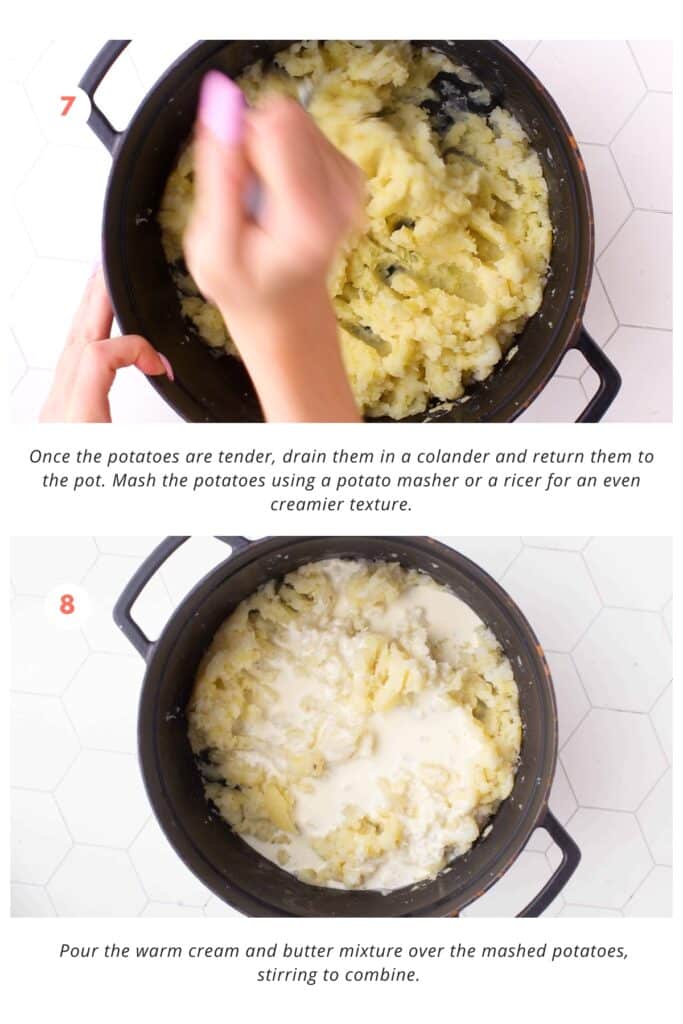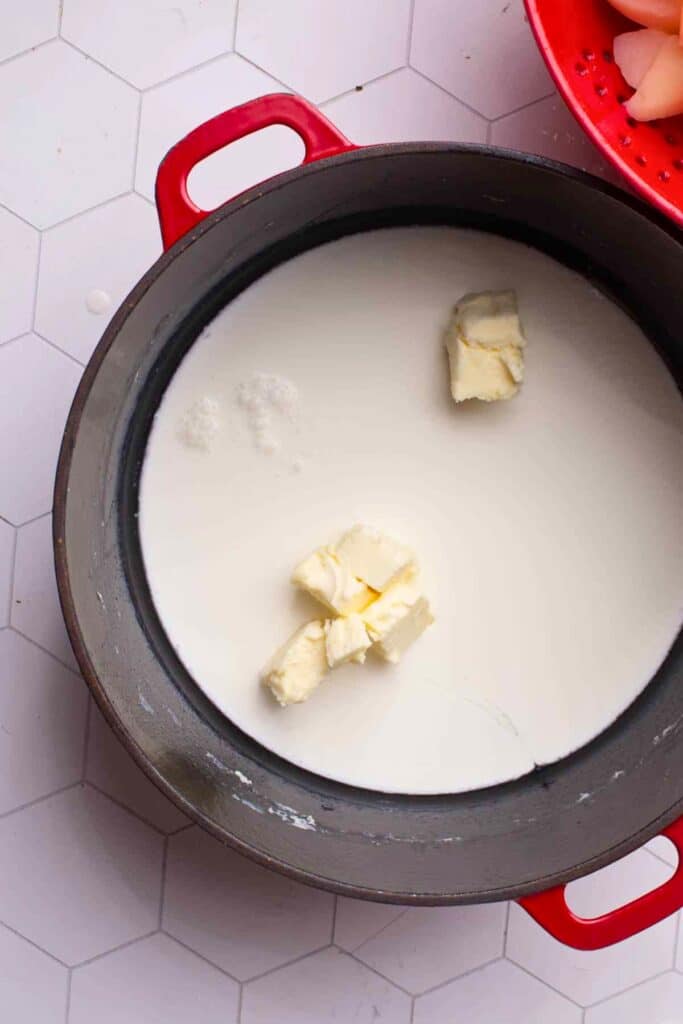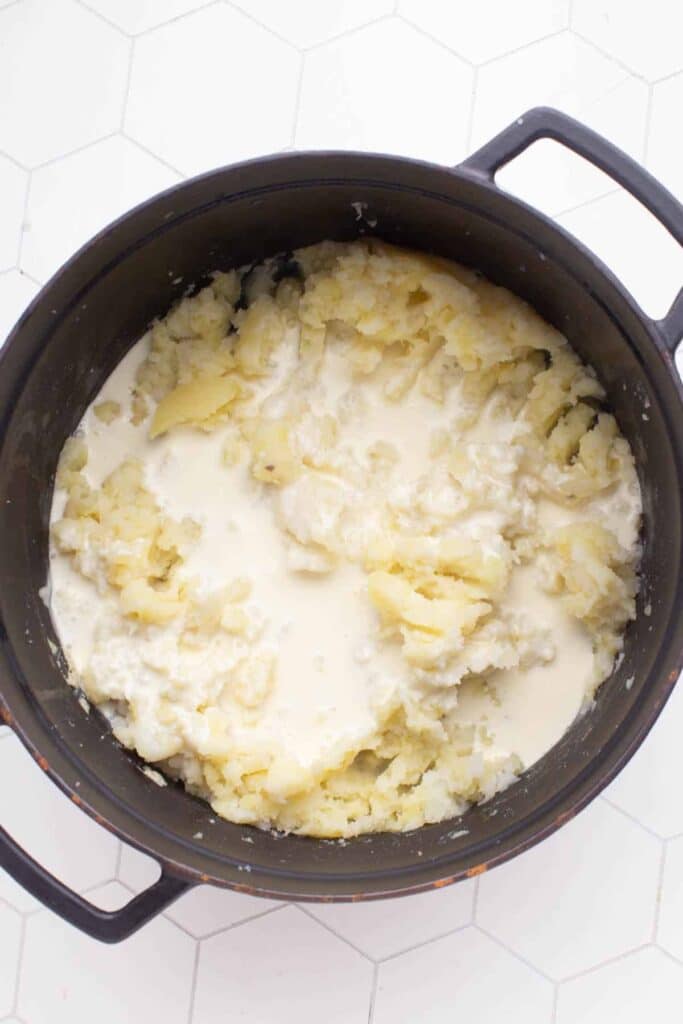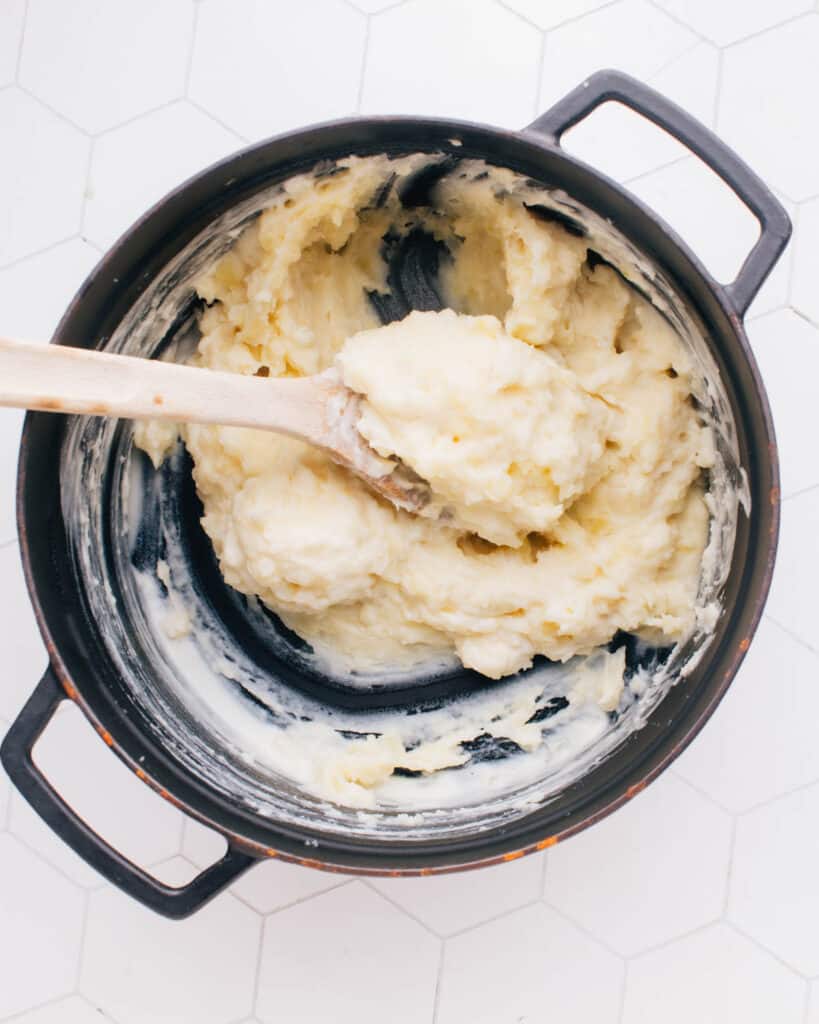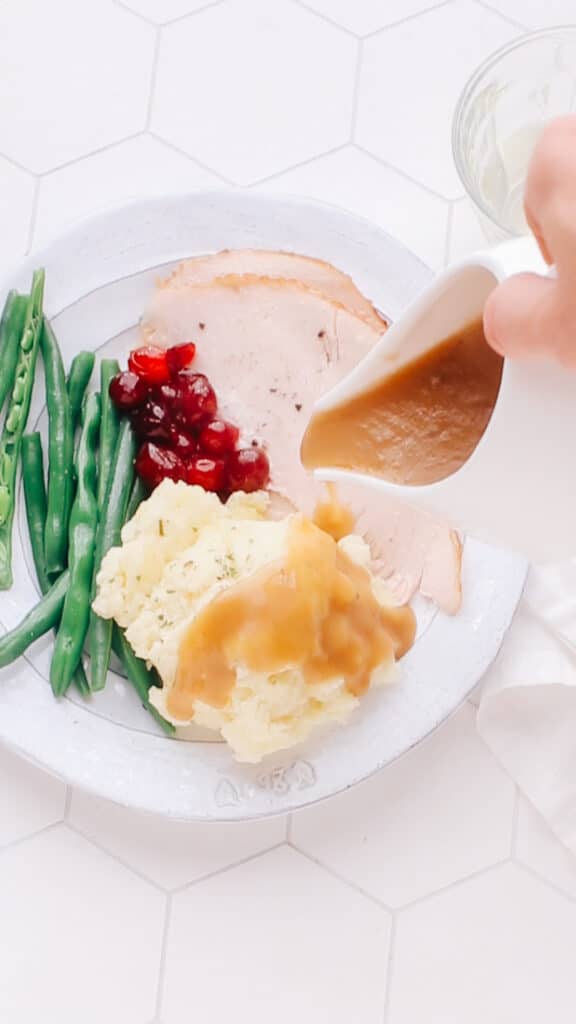Oct 04, 2023, Updated Oct 14, 2024
Why This Mashed Potato Recipe Is So Good
When it comes to comfort food, mashed potatoes often top the list for many people, and there’s a reason why this particular recipe stands out among the rest. By focusing on the ingredients, techniques, and little tips and tricks, this recipe elevates a humble dish into something that’s not just a side but a star in its own right. Once you try it, you’ll understand why this is the go-to mashed potatoes recipe for any occasion.
Here’s What You Need
Ingredients for Mashed Potatoes
Russet Potatoes: The starchy backbone of the dish, offering a fluffy and smooth texture when mashed. Salt: Elevates the natural flavors of the potatoes and other ingredients. Super important to salt the cooking water (more on that in the Science tips section below). Butter: Adds creaminess, richness, and that delicious buttery taste. Heavy Cream: Contributes to the luxurious texture and mouthfeel of the mashed potatoes.
Variations and Substitutions
Yukon Gold Potatoes: If you prefer a thicker texture instead of fluffy, substitute Russet with Yukon Gold. Vegan Butter: For a dairy-free version, replace butter with a plant-based substitute. Barista Oat Milk: Use this creamy oat milk as a vegan-friendly substitute for heavy cream. Cheese: Mix in a handful of finely grated Parmesan for an extra layer of savory flavor and richness.
Grab These Tools
Equip yourself with these kitchen gadgets:
Pots: A large pot is necessary for boiling the potatoes and you’ll need a small saucepan for heating up the dairy. Colander: To drain the boiled potatoes before mashing. Potato Masher: The key to turning your boiled potatoes into a smooth mash. A potato ricer is even better, but not necessary. I like to stick to basic equipment. Large Rubber Spatula: Useful for scraping down the sides of the bowl to ensure even mixing.
How to Make The Best Mashed Potatoes: Easy Step-by-Step Directions
Without further banter, just follow these steps to achieve creamy, flavorful mashed potatoes that will impress any dinner guest.
Prep the Potatoes: Start by peeling and cutting the potatoes. Placing them in cold water ensures that they cook evenly. Boil the Potatoes: This step is crucial for softening the potatoes. Adding salt to the boiling water seasons the potatoes from the inside out. Monitor the tenderness by poking them with a fork.
Heat the Dairy: While the potatoes are boiling, prepare your cream and butter mixture. Warming the dairy elements beforehand helps in easier incorporation into the mashed potatoes. Drain and Mash: After draining the boiled potatoes, it’s time to mash. Choose your mashing tool based on your texture preference— a potato masher for rustic and a ricer for smoother potatoes.
Combine the Ingredients: This is where the magic happens. Pour your warm dairy mixture into the mashed potatoes and mix well. This gives the potatoes their creamy consistency. Seasoning: This step allows you to adjust the taste to your preference. Adding salt, pepper, and optional nutmeg elevates the flavors.
Taste and Adjust: Always taste your mashed potatoes to adjust the seasoning. If they’re too thick, you can add more warm cream to get your preferred consistency. Garnish and Serve: The final step before the big reveal. Transfer your perfect mashed potatoes to a serving bowl and garnish as desired for that extra touch of elegance.
What Are the Best Potatoes for Mashed Potatoes?
Russet potatoes are often considered the best choice for mashed potatoes and other recipes for several reasons: While other varieties like Yukon Gold can also make delicious mashed potatoes and may be preferred for certain recipes, russet potatoes often come out on top for their fluffy texture and ability to absorb flavors.
Why Bother Measuring the Water and Salt?
In this recipe, the salt in the cooking water is both an actual ingredient as well as part of the chemistry of great mashed potatoes. Salting the water properly seasons the potato all the way through in the first step, so you don’t have to aggressively stir in salt later. But it’s also about the science of osmosis that controls how water moves. Having a higher concentration of dissolved salt in the cooking water prevents soggy potatoes. That’s because water likes to move to where there’s more “stuff” dissolved to even things out. Properly salty cooking water means water doesn’t rush into the potato, which would make it waterlogged. Watery, bland potatoes? No thanks.
Why Bother Heating the Cream and Butter Separately?
Heating the cream and butter before incorporating them into mashed potatoes offers several benefits that can elevate the dish: Overall, taking the extra step to warm the cream and butter can contribute to superior mashed potatoes that are creamy, flavorful, and perfectly textured.
5 Common Mistakes People Make with Mashed Potatoes
Making mashed potatoes may seem simple, but there are several pitfalls that people often encounter. Here are five common mistakes to watch out for:
The Difference Between Amazing Mashed Potatoes Vs. Bad, Gluey Ones
Let’s break down the science behind what happens to potatoes when they’re cooked and mashed. Starch Granules in Potatoes: Potatoes are rich in starch, which exists in the form of tiny granules embedded within the potato cells. These granules are essentially the potato’s energy storage units. Cooking and Swelling: When you cook potatoes, these starch granules absorb water and start to swell. Imagine them as little balloons filling up with water. As they swell, they become softer, which is part of what makes cooked potatoes easy to mash. Mechanical Action and Starch Granule Breakage: Once these starch granules are swollen, they become somewhat fragile. If you mash the potatoes too aggressively or for too long—this is what’s referred to as “mechanical action”—you can actually rupture these swollen granules. Releasing Amylose: When a starch granule breaks open, it releases a starchy molecule called amylose into the surrounding mixture. Amylose has a tendency to form a gel-like consistency when it interacts with water or any liquid. The Result: Gluey Texture: The released amylose can interact with the liquid, turning the mixture into a sticky, gluey, or gummy mass instead of the creamy, fluffy texture you’re aiming for in mashed potatoes.
The Solutions:
The trick to creamy, dreamy mashed potatoes is to mash them first WITHOUT any liquid, so that you’re only rupturing the starch granules without the added liquid present to make a gel. After you’ve got the potatoes mashed up, then you can gently fold in in your warm milk or cream. Perfect, creamy texture without gumminess. Use a Hand Masher: Another pro tip for avoiding gluey mashed potatoes is to skip the electric mixer, blender, food processor, or other motorized technique and use a hand masher or ricer instead. Electric appliances are way more likely to break those delicate starch parts we talked about, making your mashed potatoes gummy. So, take it back to basics and use some good old-fashioned elbow grease for the best results.
4 Pro Tips for the Best Mashed Potatoes
4 Science-Based Secrets
Make Ahead and Storage Tips for This Mashed Potatoes Recipe
These make-ahead and storage tips ensure you’re never more than a few minutes away from the creamy, fluffy goodness of these unparalleled mashed potatoes.
How to Freeze and Reheat Mashed Potatoes
Freezing mashed potatoes extends their shelf life up to a year and offers a quick, tasty side dish on busy days. The only caveat is that the texture may become grainier once you thaw them, but nothing a little extra butter can’t fix. Freezing a Big Batch: Reheating a Big Batch: Freezing Individual Portions:
How to Serve This Mashed Potatoes Recipe
Not just for Thanksgiving dinner, this cozy side dish has a place on my table any day of the year. However, if you are making a holiday turkey, don’t miss my Guide to Turkey Dinner: A No-Stress Schedule from Shopping to Make-Ahead Cooking. Now, here’s how I like to gobble up these mashed taters. Classic Pairing: Serve alongside roast turkey (see my super-easy roast turkey recipe) or succulent roast beef with breadcrumb crust with make-ahead herbed peppercorn gravy. Comfort Food Combo: A perfect side for the best-ever meatloaf or my really crispy fried chicken. Cozy Oven Dinners: Serve as a yummy side dish to oven-baked mushroom-smothered pork chops or baked salmon with mayonnaise. I love mashed potatoes so much that I devoted an entire article to What to Eat With Mashed Potatoes (with 35+ cozy recipe ideas).
How to Use Up Leftover Mashed Potatoes
Don’t let those extra mashed potatoes go to waste! There are plenty of creative and delicious ways to give them a second life:
Fish and Potato Cakes: Combine your mashed potatoes with flaked cooked fish (like cod, salmon or tuna), some herbs, and an egg to bind it all together. Form into cakes and pan-fry until crispy on the outside and warm on the inside. Turkey Stew with Mashed Potato Dumplings: Use your leftover turkey and mashed potatoes to make a comforting stew. Add small dollops of mashed potatoes directly into the simmering stew—they’ll act as delightful, pillowy dumplings. Malai Kofta: A luxurious Indian dish that typically uses paneer, you can substitute with mashed potatoes to make the “meatballs” in the creamy tomato-based sauce. It’s a vegetarian dream come true. Leftover Turkey Casserole with Stuffing Crust Vegetarian Shepherd’s Pie: Replace the traditional meat layer in shepherd’s pie with a hearty mix of lentils and vegetables. Top it off with a layer of your leftover mashed potatoes before baking until golden. Potato Samosas, Aloo Naan or Samosa Pie: Make one of these super-tasty Indian recipes. You can skip boiling the potatoes from scratch and add your sauteed Aloo Masala seasonings and spices directly to pre-cooked mashed potatoes.
Give these ideas a try and turn your leftovers into new, exciting dishes! Consider this the “too-long-didn’t-read” section in case you just skimmed the article.
